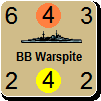As to "what happened to the US aircraft...designated for that theatre",
From
http://www.adf-gallery.com.au/
Brewster Bermuda: “Almost in Australian Service”
In the RAAF context, desperately short of modern types in 1941, some 243 Brewster Bermudas were to
be initially ordered to equip several squadrons.
It was expected that the initial four would arrive during June 1941 and with subsequent monthly
deliveries would allow the following 11 squadrons to equip with 18 Bermudas each (12 IE & 6 IR):
• Establishing 27 Squadron RAAF July 1941 Hobart Tasmania
• Re-equipping 21 Squadron RAAF August 1941 Malaya from Wirraways.
• Establishing 28, 30 and 31 Squadrons RAAF at Richmond NSW September 1941
• Establishing 26 Squadron RAAF and re-equipping 12 Squadron RAAF from Wirraways at Darwin NT during October 1941
• Re-equipping 22 and 25 Squadrons RAAF in each capital City during November 1941 from Wirraways
• Re-equipping 4 Squadron RAAF Canberra during December 1941 from Wirraways.
• Re-equipping 5 Squadron RAAF with ex-30 Sqn Bermudas during January 1942 from Wirraways.
• Re-equipping 23 and 24 Squadrons RAAF in each capital City during February (with Ex-31Squadron Bermudas) and March 1942 respectively from Wirraways
• This would leave a pool of 45 aircraft for maintenance, training and normal attrition.
30 and 31 Squadrons RAAF, being based at Richmond NSW, would only use them initially as
transition trainers till they were re-equipped with twin-engine fighters allocated from some 54
Beaufighters ordered during May 1941. With 12 to arrive December 1941, followed by 14 monthly by
March 1942, thereby making a total of 54 Beaufighters.
Due to the lengthy delays, apparent un-resolved design and performance flaws with the Bermuda
aircraft, the RAAF during November 1941, decided to cancel and place orders for the Vultee
Vengeance dive-bombers instead.

















